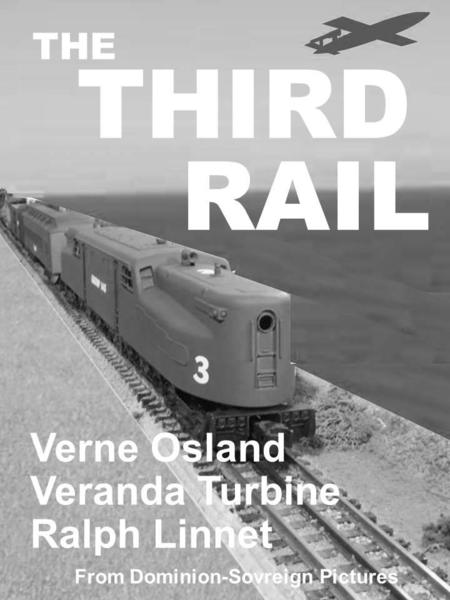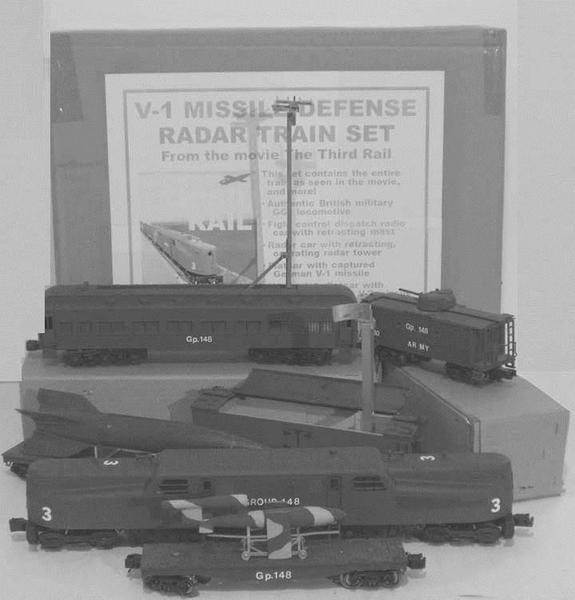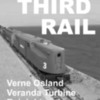Yes, this is a bit different, but I think cool. And it was a lot of fun.
And no, this set never existed, I made it up.
My book Veranda Turbine - A Life, is grinding its way to completion. But at 100,000 words, it takes a while to finish and proof, and I decided to ramp up the "model train content" of the book considerably so I re-wrote it a bit, changing one of the characters, a famous Hollywood producer, to a "model train nut of the brightest magnitude," and working in Lionel and Madison hardware into the plot, etc., etc. Lots more train, and lots more fun - for me at least.
Anyway, the famous producer makes a hit movie, The Third Rail, just because he likes three rail electric trains, which he works into the plot as much as possible. In the movie, the Germans have developed a new version of the V-1 they can program to take a zigzag course to avoid British radar sites. The Brits respond by extending the London metro system out into the country, and creating "Group One Forty-Eight" which is in charge of and running mobile railroad radar trains, powered by modified American GG1s, each pulling a mobile radar car and fighter control dispatch car -- the radars and radio dispatch center are powered by electricity from the third rail of the tracks. In this way the Germans never know where the radars will be -- except for their spies: the plot is all about the search for the spies, of course.
Anyway, in the book, after the movie is a hit, a toy train set based on the movie is produced and put on sale for Christmas 1947. I realize this is incredible and totally urealistic, that no toy company would ever make a train sets based on trains in a famous movie, but anyway . . . Here it is, the "1947 V-1 Missile Defense Radar Train Set." I had a lot of fun making this set and it is in two photos in the book.
The three radar sentry trains protecting London are each pulled by a GG1s modified to operate from electricity from the third rail of the track rather than overhead. Like that famous producer, I think the GG1 looks better without anything on the roof.
In the movie, the train consists only of these two cars. The fighter dispatch control car is a shortened heavyweight car with a retracting radio tower to talk to the Spitfires and Gloster Meteors. The radar is kept in a modified reefer.
Both cars operate. Here they are with their equipment retracted, for transport.
I figured even though the trains in the movie had only those two necessary cars, a train set would have added a few, so I made these to flatcars with "captured" V-1 and V-2 missiles, and a battle caboose. These would certainly make the set irresistable to eight year olds (at least, this eight-year old!![]() ).
).











